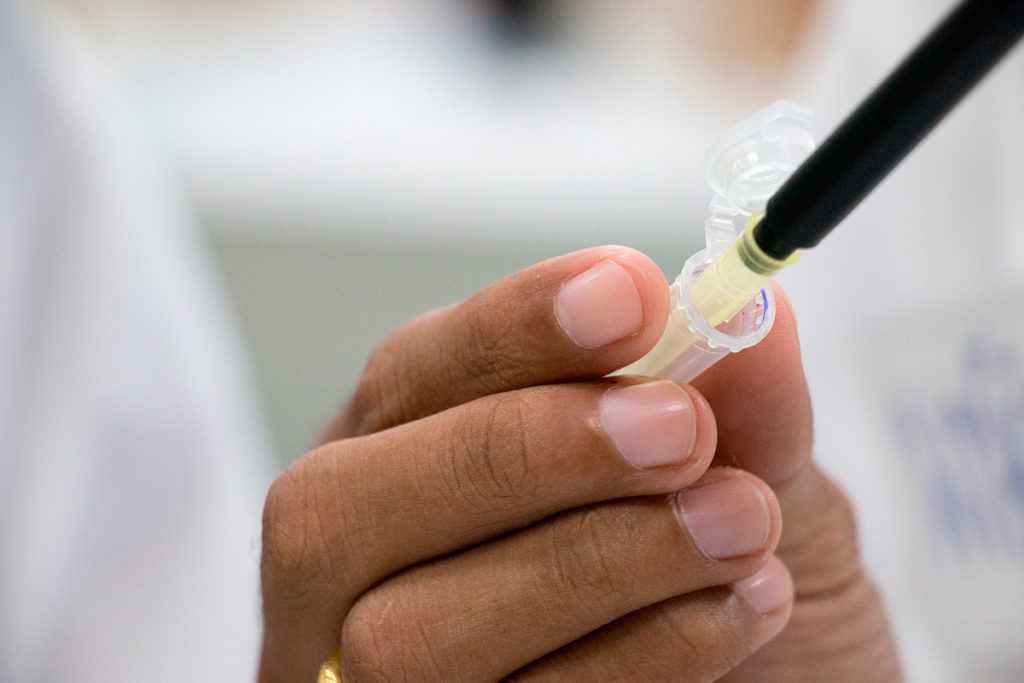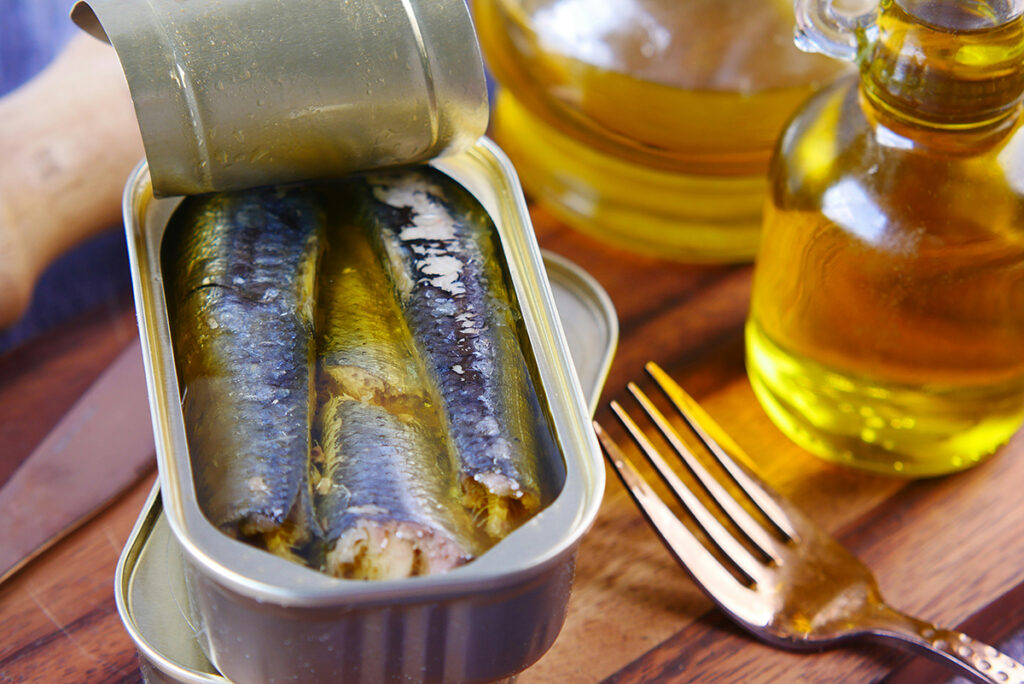Cytokines guide the flow of COVID-19
Scientists compared immune responses in patients with mild and severe forms of COVID-19 with reactions in patients with severe flu. In contrast to the flu, increased levels of TNF and IL-1β cytokines cause inflammation in COVID-19. Type I interferons play a crucial role in inflammation in severe COVID-19.
Most infected people have a mild form of COVID-19. But some, especially elderly patients, develop a severe form of COVID-19 that requires artificial ventilation. In China, the death rate from COVID-19 is estimated at 1.4%. It is lower than mortality from past SARS and MERS coronaviruses, but much higher than from influenza. In severe cases, the flu also requires hospitalization and intensive care.
The severe form of COVID-19 is accompanied by acute respiratory distress syndrome and systemic inflammation-cytokine storm. To find out what factors cause severe COVID-19, scientists sequenced single-cell RNA using peripheral blood mononuclear cells (PBMC). For the study, blood was taken from healthy donors, patients with mild and severe forms of COVID-19, and patients with severe flu. In contrast to the cells of patients with severe influenza, hyperinflammation was observed in all cell types of patients with COVID-19. Hyperinflammation was caused by elevated levels of cytokines: tumor necrosis factor (TNF) and interleukin-1β (IL-1β). In patients with severe COVID-19, in contrast to patients with mild form, a type I interferon (IFN-I) response was observed along with hyperinflammation. Also, inflammation caused by the IFN-I response was present in patients with severe flu. Scientists have suggested that the IFN-I response plays a key role in exacerbating inflammation in severe COVID-19.
Type I interferons have antiviral activity. However, a delayed significant IFN-I response leads to the development of acute respiratory distress syndrome and increased mortality in coronavirus infection.
Mice infected with SARS-CoV showed a delayed but significant IFN-I response. The IFN-I response caused the accumulation of macrophage monocytes and the production of pro-inflammatory cytokines. The mice died from pneumonia with vascular leakage and a violation of the virus-specific t-cell response.
Patients with COVID-19 suffer from immune dysfunction. In severe cases, pro-inflammatory cytokines cause immune dysfunction. In patients with severe COVID-19, the absolute number of T-cells is reduced. T-cells are depleted and express inhibitory receptors. Nevertheless, there is also hyperactivity of T-cells. The study describes such a fatal case of COVID-19. The patient had elevated levels of cytotoxic molecules and human leukocyte antigen (HLA)-DR CD38.
Immunological changes in COVID-19 and influenza
For the study, PBMC was taken from 4 healthy donors, 5 hospitalized patients with severe influenza, and 8 patients with COVID-19 of various severity: severe, mild, and asymptomatic. In three patients with COVID-19, PBMC was taken twice at different times of hospitalization.
PBMC samples of patients with COVID-19 were divided into groups of severe (≥5) and mild (<5) forms of the disease. Respiratory rate, oxygen saturation, respiratory support, body temperature, systolic blood pressure, heart rate, and consciousness were assessed. Patients with severe flu were included in the study before COVID-19: from December 2015 to April 2016. Flu cases were classified as severe when hospitalization was required. The group with severe COVID-19 had a significantly reduced number of lymphocytes. Furthermore, the level of C-reactive protein in the serum was higher than in the group with a mild form of COVID-19. To compare PBMC, the researchers selected 11 types of immune cells: IgG-B cells, IgG+ B cells, EM-like CD4+ T-cells, non-EM-like CD4+ T-cells, EM-like CD8+ T-cells, non-EM-like CD8+ T-cells, NK cells, classical monocytes, intermediate monocytes, non-classical monocytes, and dendritic cells (DC). Significant immunological changes were observed only in severe COVID-19 and severe influenza.
| Severe COVID-19 | Severe flu | |
| Cell share increased | classic monocytes | classic monocytes |
| Cell share decreased | DC
non-classical monocytes intermediate monocytes NK cells EM-like CD8+ T-cells EM-like CD4+ T-cells |
DC
non-EM-like CD4-T-cells + ЕМ-like CD4+ Т-cells IgG+ В-cells IgG– В-cells |
Genetic changes in flu and COVID-19
Cluster analysis of monocytes showed that CAVID-19 has characteristic gene expression patterns in all PBMC cell types. Regardless of the cell type, peripheral blood immune cells in COVID-19 are affected by common inflammatory mediators. The nature of gene expression in mild and severe COVID-19 and severe influenza differ. However, there are common transcriptomic signatures in all types of monocytes and DC. Perhaps this shows the common mechanisms that underlie innate immune responses in severe flu and severe COVID-19.
The severe and mild forms of COVID-19 were combined into the COVID-19 group and identified COVID-19 and flu-specific changes in the genes for each cell type compared to the healthy donor group.
|
|
COVID-19 | Flu |
| Activated | NFKB1
NFKB2 IRF1 CXCR |
CXCL10
STAT1 TLR4 HLA class II genes immunoproteasome subunit genes |
TNF, TGFB1, IL1B, and IFNG are also usually activated. A comparison of COVID-19 and influenza showed that NFKB1, NFKB2, and TNF were activated in COVID-19, while STAT1, TLR4, and immunoproteasome subunit genes were activated in influenza.
High activity of inflammatory response genes is present in both COVID-19 and influenza. Nevertheless, transcription factor genes, including inflammatory factors (NFKB1/2 and STAT4), were activated only in COVID-19.
In contrast to influenza, COVID-19 had a limited response of genes associated with the IFN and IFN-II signaling pathways, as well as T-cell receptor pathways and adaptive immune response.
| Modular expression pattern depending on the cell type | |||||
| CD8+ T | NK | All types of monocytes | All types of T-cells | DC | |
| COVID-19 | NFKB1/2
JUN TNF |
NFKB1/2
JUN TNF |
IL1B
NFKBID OSM |
IL1B
NFKBID OSM |
|
| Flu | GBP1
TAP1 STAT1 IFITM3 OAS1 IRF3 IFNG |
CXCL10
TLR4 |
GBP1
TAP1 STAT1 IFITM3 OAS1 IRF3 IFNG |
CXCL10
TLR4 |
|
Comparing COVID-19 and influenza, differentially expressed genes were dominant in CD8+ T-cells and all monocyte types.
Clear subpopulations of CD8+ T-cells in COVID-19 and influenza
Subcluster analysis of EM-like and non-EM-like CD8+ T-cells revealed COVID-19 and influenza-specific transcriptomic signatures. The diseases were identified in a cluster of non-EM-like CD8+ T-cells. Genes expressed in COVID-19 reflect activation of the immune response: CD27, RGS1, CCL5, SELL, and RGS10. Network analysis of protein interaction showed that PRF1, GNLY, GZMB, and GZMH are activated in influenza, and GZMK, GZMA, CXCR3, and CCL5 called up in COVID-19. Increased expression of genes activated by IFN-γ: STAT1, TAP1, PSMB9, and PSME2 was observed only in influenza. The response pathways to IFN-I and IFN-II were more associated with influenza. Moreover, the response pathways to TNF or IL-1β are with COVID-19.
Transcription signatures of classical monocytes in COVID-19
Classical monocytes play a crucial role in inflammatory responses. Subcluster analysis of classical monocytes and GSEA showed that light/severe COVID-19-specific genes were enriched with TNF / IL-1β-sensitive genes, and flu-specific genes were fortified with both TNF / IL-1β-sensitive and IFN-I-sensitive genes. It shows that, compared to COVID-19, the IFN-I response is dominant in influenza.
Clusters of influenza + severe COVID-19 genes and genes specific for severe COVID-19, in addition to enrichment in TNF / IL-1β-sensitive genes, showed a strong association with genes responsive to IFN-I. That means the severe form of COVID-19 acquires IFN-I-sensitive features in addition to TNF / IL-1β – inflammatory properties.
IFN-I response in addition to TNF / IL-1β inflammatory response in severe COVID-19
Scientists compared classical monocytes between the light and heavy form of COVID-19. Analysis of differentially expressed genes showed that in severe COVID-19, the regulation of interferon-stimulated genes (ISG) was increased: ISG15, IFITM1 / 2/3, and ISG20. Both TNF / IL-1β-sensitive and IFN-I-sensitive genes were enriched with heavy COVID-19-specific genes.
The researchers measured plasma concentrations of TNF, IL-1β, IL-6, IFN-β, IFN-γ, and IL-18 in a larger group of patients with COVID-19. Among these cytokines, levels of IL-6 and IL-18 were significantly increased in the severe form of COVID-19 compared to the mild form. There were no differences in plasma concentrations of other cytokines. These results show that because of the overlapping effects of cytokines, the signatures of cytokine-sensitive genes cannot merely be explained by multiple cytokines.
To further compare the severe and mild forms of COVID-19, the researchers used PBMC taken from different periods of the disease in a single patient. Severe COVID-19 genes were associated with an inflammatory response associated with both IFN-I and TNF / IL-1β. It is not observed among the light-form genes.
TNF is an inflammatory cytokine. Toll-like receptors (TLR) activate the immune response and induce expression in monocytes. TNF causes the immune system to tolerate TLR, and IFN-I causes a hyperinflammatory response and eliminates the tolerance caused by TNF.
Analysis of the gene module confirmed that in severe COVID-19, IFN-I-induced inflammatory response is associated with TNF-induced TLR tolerance. It indicates that the IFN-I response can exacerbate hyperinflation by eliminating the negative feedback mechanism.
Confirmation of hyperinflammatory properties in combination with the IFN-I response in lung tissue in the fatal case of COVID-19
To confirm the Association of the IFN-I response with hyperinflation, the researchers used data on the RNA sequence of lung tissues of patients with lethal COVID-19. In severe COVID-19, IFITM1, ISG15, and JAK3 were upregulated, and RPS18 was downregulated in lung tissues and classical monocytes. Analysis of cytokine-sensitive gene sets found both IFN-I and TNF / IL-1β-inflammatory responses in lung tissues. Analysis of differentially expressed light and heavy COVID-19 genes showed that genes in post-mortem lung tissue were associated with severe-specific COVID-19 genes.
A recent study of SARS-CoV-2 on in vitro cells, on ferrets, and post-mortem lung samples of patients with lethal COVID-19 has shown that IFN-I and IFN-III responses are attenuated. However, in the current study, the researchers came up with the opposite result: the IFN-I signaling pathway and innate immune response genes were relatively activated in post-mortem lung samples of patients with lethal COVID-19. In ferrets, SARS-CoV-2 causes mild disease. This study shows that the IFN-I reaction is activated only in the severe form of COVID-19, but not in the mild form. It is confirmed by post-mortem lung samples of patients with lethal COVID-19. A recent COVID-19 study also showed a sustained IFN-I response in addition to a pro-inflammatory response in the bronchoalveolar lavage of patients with COVID-19. Also, increased regulation of IFN-I-sensitive genes has been demonstrated in intestinal organoids infected with SARS-CoV-2.
Conclusions
The course and outcome of COVID-19 are affected by both inflammatory cytokines: TNF, IL-1β, IL-6, and the pathological response of type I interferon. In a mouse model of SARS-CoV infection, the response time of type I interferon determines the outcome of the disease. A delayed IFN-I response increases inflammation, whereas an early IFN-I response suppresses virus replication. Further study of anti-inflammatory strategies aimed at both inflammatory cytokines and the late response of type I interferon is needed.



